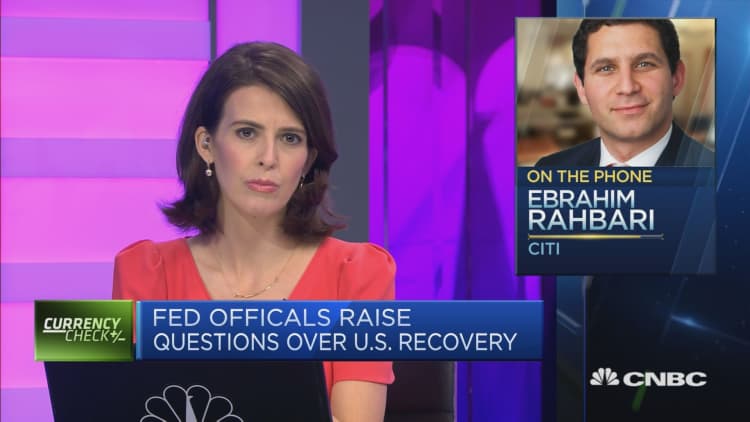
Don't expect the Chinese yuan to become a "safe-haven" alternative to the dollar or U.S. Treasurys anytime soon, says Ebrahim Rahbari, global head of foreign exchange analysis at Citi.
"I'm very skeptical," Rahbari told CNBC's "Street Signs Asia" on Thursday, when asked if the Chinese currency could develop a safe-haven status of its own.
Rahbari explained so-called safe-haven assets typically have certain attributes. Firstly, the analyst said, they tend to offer a long-term store of value function. In the shorter-term, he added, they also provide "refuge" during "periods of crisis."
"Clearly, the yuan doesn't qualify," Rahbari said.
"You can't get in and out, both in terms of how easy it is to access … the local financial markets but also because the liquidity simply isn't there in a lot of the … assets still," he said.
As a result, even if the outlook for the Chinese economy and its financial markets is "broadly more benign," the yuan has a "very, very long way ahead" before it can become a real alternative to the dollar and Treasurys, the Citi analyst said.
"For the time being, there's a bit of a debate whether … the euro can have a bit of a window to … enter that fray again. But I think the yuan, there's still a long, long time away," Rahbari said.
'Downside room' for dollar-yuan
The yuan has strengthened significantly in recent days following a surge in the mainland Chinese stock markets, with the Shanghai composite soaring nearly 6% on Monday alone. The yuan last traded at 6.99 per dollar as of Thursday afternoon Singapore time, after seeing levels above 7.05 earlier in the month. The currency's offshore counterpart, meanwhile, changed hands at 6.9892 per dollar.
Asked about the outlook for the yuan, Rahbari said: "When we look at the yuan we always have to contrast what's going on in Asia with what's going on with the dollar overall."
At the moment, both those factors appear to be "pointing towards a little bit of downside" for the dollar-yuan, he said.
"It is the sense that the Asian region is recovering, that maybe China's asset markets are catching up with the positive sentiment around it, but also that we're seeing some downside pressure … on the U.S. dollar more broadly," the analyst said.
"We think we will stay below 7 and there's certainly some downside room for where we are right now," Rahbari said.


